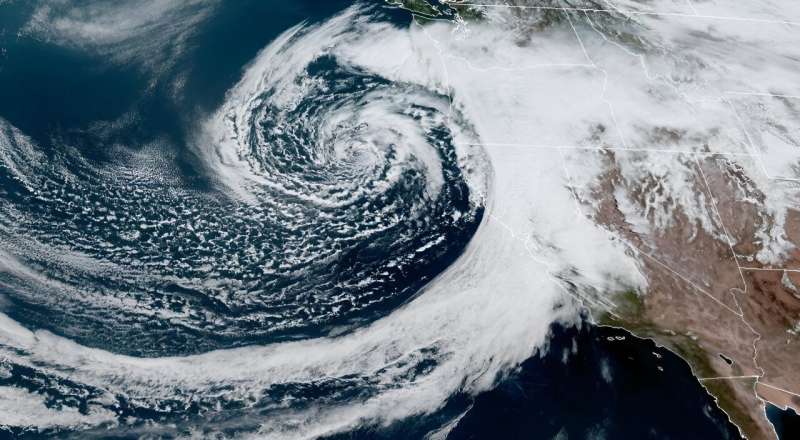This article has been reviewed according to Science X's editorial process and policies. Editors have highlighted the following attributes while ensuring the content's credibility:
fact-checked
peer-reviewed publication
trusted source
proofread
Examining how weather patterns will change in the future

In a warming Pacific Northwest, summers are getting hotter and winters less cold, but the atmospheric patterns that influence the weather aren't necessarily expected to become stronger or more frequent by the end of the century, according to a new Portland State University study.
That means that in an overall warmer climate, models suggest we'll have the same variety of atmospheric patterns as we have now but the weather we experience from them will be warmer and, in some cases, wetter.
Graham Taylor, a Ph.D. student in PSU's Earth, Environment and Society program, and Paul Loikith, associate professor of geography at PSU, applied a novel machine-learning approach to assess to what degree the range of weather patterns over the Pacific Northwest will change under a high-end scenario of future warming using a suite of state-of-the-art climate models. Their findings were published in the Journal of Climate.
The study's aim was to look at whether a warming climate would make certain types of weather patterns—movements of air that on a large scale can influence whether it's hotter than average, colder than average, dry or wet—become more or less frequent or stronger or weaker.
"We get a certain number of patterns that bring us rain, patterns that bring us heat waves and patterns that are average," Taylor said. "The range and strength of those patterns isn't projected to necessarily change, but they will be within a much warmer climate."
For example, the study does not show that heat domes—which became part of the public's vocabulary after the deadly weather event in June 2021—will become more common or stronger, only that they will be hotter when they do occur.
"Global warming is making everything warmer," Loikith said. "Hot summer patterns are getting hotter, but we're not seeing a shift towards more hot patterns according to these models. It's just more hot weather because everything's hotter."
The study also found that the models show an increase in rainfall over the Pacific Northwest in most seasons except summer in a warmer future.
More information: Graham P. Taylor et al, Projections of Large-Scale Atmospheric Circulation Patterns and Associated Temperature and Precipitation over the Pacific Northwest Using CMIP6 Models, Journal of Climate (2023). DOI: 10.1175/JCLI-D-23-0108.1
Journal information: Journal of Climate
Provided by Portland State University





















